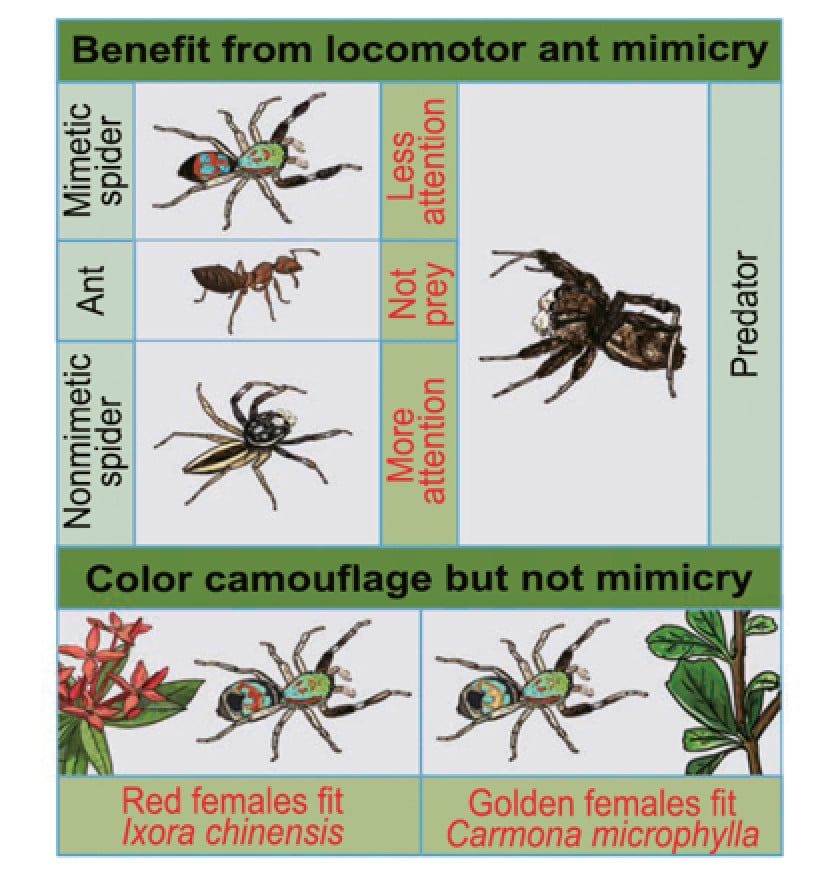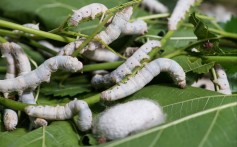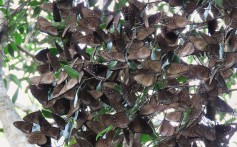ARACHNOPHOBES MOVE ON
Meet the tiny jumping spider that walks like a feisty ant to evade predators
Siler collingwoodi evades spider-eating spiders but does not fool all hunters, Peking University researchers find
‘Being a general mimic rather than perfectly mimicking one ant species could benefit the spiders by allowing them to expand their range’, study co-author says
Holly Chik
SCMP
Published: 28 May, 2023

Unlike other jumping spiders that copy ant movements, the Siler collingwoodii is brightly coloured. Photo: Zeng Hua
To avoid being eaten, a tiny Asian jumping spider walks like its insect neighbours, mimicking ants with strong defences that bite back with mandibles and may carry venom, according to a new study.
While its gait does not provide universal protection, the Siler collingwoodi spider also has a colourful body that aids its camouflage in the red-flowering West Indian jasmine, the plant it lives in.

Siler collingwoodi walking style is most similar to three similarly sized ant species, Chinese scientists find. Photo: Handout
A team from Peking University’s school of life sciences published its findings in the peer-reviewed journal iScience on May 17.
“We found that [the spiders] typically move in a fashion similar to that of multiple sympatric ants, whereas the bright-coloured appearance blends … well into their living environment,” the team wrote in the article.
The researchers collected samples of the S. collingwoodi spider from southern Hainan and observed how they moved in a laboratory.
Chinese scientists say their silkworms beat spider fibre for strength
7 Oct 2022

The scientists found that the spider walks in an antlike manner – raising its front legs to mimic an ant’s antennae, bobbing the abdomen and lifting its legs to walk, instead of jumping like typical jumping spiders.
The team found that the spider’s walking style was most similar to three co-occurring ant species, which were also closer in size to the spider.
“S. collingwoodi is not necessarily a perfect mimic, because its gait and trajectory showed high similarity with multiple ant species,” said study co-author and Peking University ecologist Zeng Hua.
“Being a general mimic rather than perfectly mimicking one ant species could benefit the spiders by allowing them to expand their range if the ant models occupy different habitats.”
Published: 28 May, 2023

Unlike other jumping spiders that copy ant movements, the Siler collingwoodii is brightly coloured. Photo: Zeng Hua
To avoid being eaten, a tiny Asian jumping spider walks like its insect neighbours, mimicking ants with strong defences that bite back with mandibles and may carry venom, according to a new study.
While its gait does not provide universal protection, the Siler collingwoodi spider also has a colourful body that aids its camouflage in the red-flowering West Indian jasmine, the plant it lives in.

Siler collingwoodi walking style is most similar to three similarly sized ant species, Chinese scientists find. Photo: Handout
A team from Peking University’s school of life sciences published its findings in the peer-reviewed journal iScience on May 17.
“We found that [the spiders] typically move in a fashion similar to that of multiple sympatric ants, whereas the bright-coloured appearance blends … well into their living environment,” the team wrote in the article.
The researchers collected samples of the S. collingwoodi spider from southern Hainan and observed how they moved in a laboratory.
Chinese scientists say their silkworms beat spider fibre for strength
7 Oct 2022

The scientists found that the spider walks in an antlike manner – raising its front legs to mimic an ant’s antennae, bobbing the abdomen and lifting its legs to walk, instead of jumping like typical jumping spiders.
The team found that the spider’s walking style was most similar to three co-occurring ant species, which were also closer in size to the spider.
“S. collingwoodi is not necessarily a perfect mimic, because its gait and trajectory showed high similarity with multiple ant species,” said study co-author and Peking University ecologist Zeng Hua.
“Being a general mimic rather than perfectly mimicking one ant species could benefit the spiders by allowing them to expand their range if the ant models occupy different habitats.”

Siler collingwoodi finds camouflage in a red-flowering tree. Photo: Chen Yuchang
She said the spider had brilliant body coloration, unlike typical ant-mimicking spiders which adopted the brown or black body colour of ants.
They found that the colourful spiders were better camouflaged on a red-flowering jasmine plant than in a tea tree, two plants they live on, from two likely predators.
Those predators are Portia labiata, a jumping spider of similar size and with colour vision that preys on other spiders, and Gonypeta brunneri, a generalist praying mantis that sees in monochrome.
The researchers said that from 17 trials where the predators could prey on the ant-mimicking spider and another jumping spider, the predator spider launched five attacks – all towards the non-mimic – while the mantises attacked both prey species equally.
“The simulated ant locomotion of S. collingwoodi only worked for the jumping spider predator, while the praying mantis showed indiscriminate attacks on both ants and mimics,” co-author Zhang Wei, a Peking University evolutionary ecologist, said.
Scientists seek to track butterflies in Hong Kong and mainland China
8 Feb 2023

“For the spider predator, a random attack on an ant could result in injury, so they are very careful predators and will only attack if they can distinguish S. collingwoodi from ants with a high degree of certainty.”
But because the praying mantises are much larger than their prey, they are able to eat spiny ants without risking serious injury.
No comments:
Post a Comment